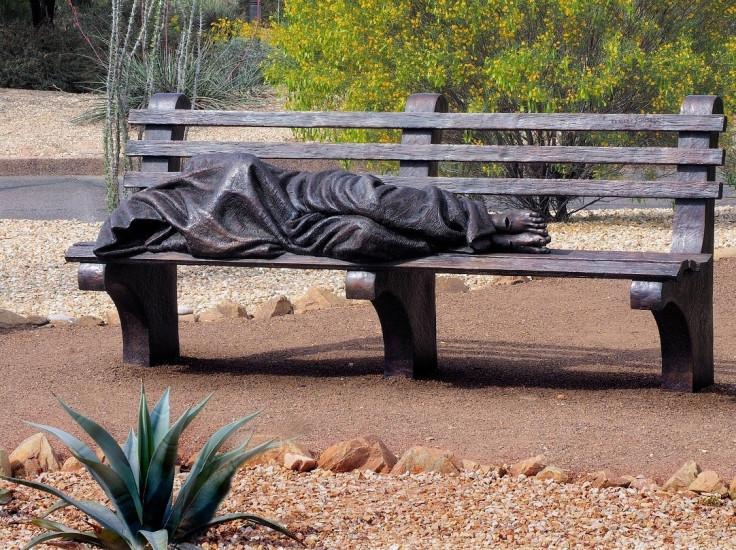Glasgow unveils 'homeless Jesus' statue to raise awareness of rough sleepers

KEY POINTS
- Some churches refuse to display metal cast of Christ sleeping on a bench.
- Christ face not shown but crucifixion wounds revealed.
A statue depicting Jesus as a homeless man sleeping rough on a bench has been unveiled in Glasgow's city centre.
Carved by the Canadian sculptor Timothy Schwartz, the statue lies near Glasgow's St George's Tron Church.
Some churches had opposed displaying the statue in their grounds but Glasgow's church and charity officials are hoping it will help raise awareness about rough sleepers during winter.
The face of the statue is not shown but holes in its feet represent the crucifixion wounds Jesus sustained.
Father Willy Slavin, a Glasgow priest, was contacted by Schwartz in 2015 and took the idea to the city's church association, Glasgow Churches Together.
Thanks to a community effort, the £25,000 project could take place. It was financed by church activities and pro-bono work.
Schwartz got the idea for the statue while watching a rough sleeper in Toronto. He named his artwork Matthew 25 in honour of a verse in that gospel, "Truly I tell you, whatever you did for one of the least of these brothers and sisters of mine, you did for me."
The statue has proved a polarising piece of work since its creation in 2013.
You can see it in Singapore and Madrid, and in 2016, Pope Francis blessed a smaller version of the sculpture in Rome. That same year, Westminster city council refused to display the statue after Schwartz contacted them. Some believe that depicting Jesus as a homeless man is controversial or even blasphemous.
In Manchester, students are trying to convince their university to let rough sleepers take shelter in their halls of residence over the festive season.
A petition was filed on Change.org on 3 December and has gathered more than 530 signatures. The university has rejected the idea, however, arguing that the halls would not be empty over the holidays and that the buildings would lose their status as student accommodation if non-students were to use them.






















